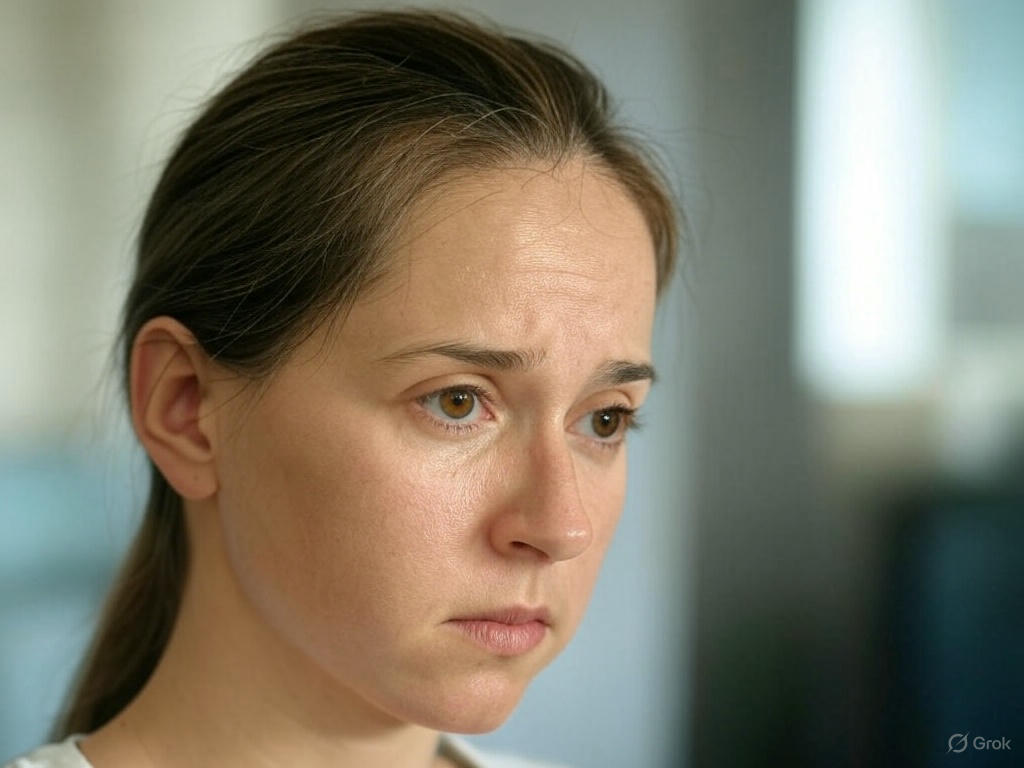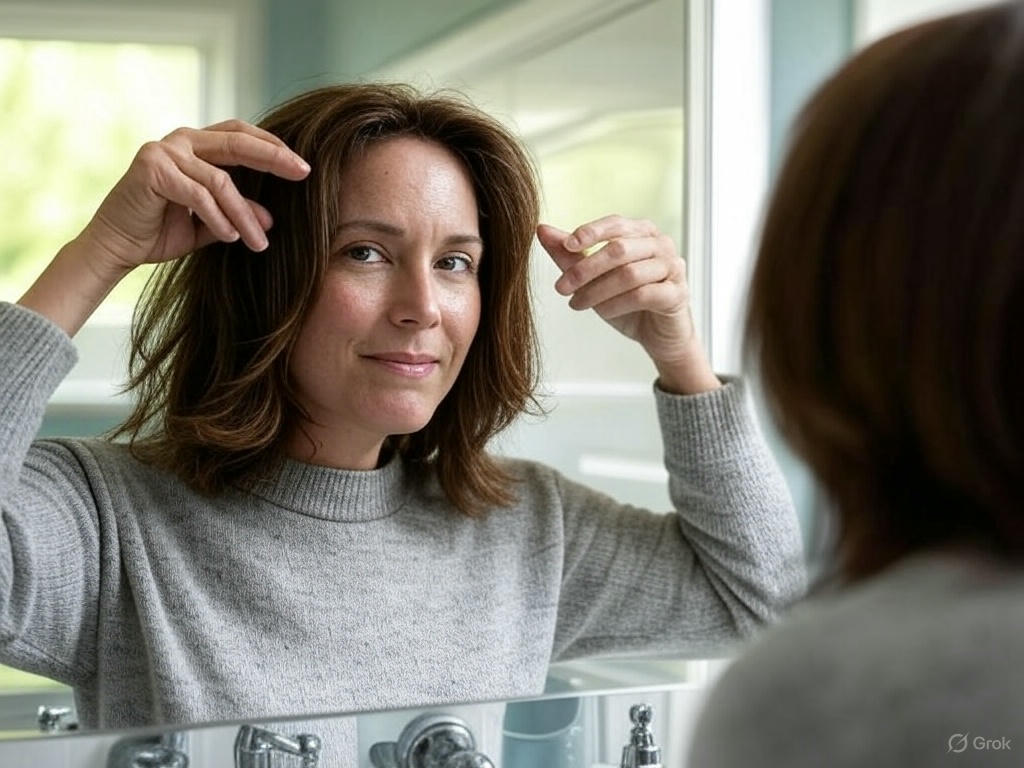1500+ ★★★★★ REVIEWS
Diagnosis and Treatment for Hair Loss: Your Complete Guide

Hair loss affects millions worldwide, impacting confidence and quality of life, but understanding how it’s diagnosed and treated can empower you to take control. Whether it’s gradual thinning or sudden patches, hair loss stems from diverse causes—hormonal shifts, genetics, or even styling habits. The American Academy of Dermatology (AAD) estimates that 80 million Americans experience hereditary hair loss alone, underscoring its prevalence. This guide explores the diagnostic process and treatment options, from medical interventions to non-medical solutions like Mesh Integration, Toppers, and Wigs. For expert non-medical care, Hottie Hair Salon & Extensions Store in Las Vegas stands out as a go-to resource. Curious about hair loss basics? Check out Hottie Hair’s overview of common hair loss causes.
Table of Contents
Understanding Hair Loss Diagnosis

Diagnosing hair loss begins with pinpointing its root cause, a step that’s critical for effective treatment. The process often starts with a detailed history—your doctor will ask about family hair loss patterns, diet, stress, and recent health changes. Physical exams follow, where the scalp is inspected for inflammation, scarring, or unusual shedding. The Mayo Clinic explains that this thorough approach helps distinguish between temporary conditions like telogen effluvium and permanent ones like scarring alopecia. For those in Las Vegas seeking local expertise, Desert Dermatology offers comprehensive evaluations tailored to individual needs.
Common Diagnostic Methods
Several methods refine the diagnosis, ensuring precision. A pull test, where a doctor gently tugs on hair to assess shedding, is a simple starting point. Blood tests might check for deficiencies (like iron or vitamin D) or hormonal imbalances, common culprits in hair loss. For trickier cases, a scalp biopsy—removing a small skin sample—reveals if follicles are scarred, per the Cleveland Clinic. Trichoscopy, using a magnifying tool, can also spot subtle scalp changes, as noted by DermNet NZ. Las Vegas residents can turn to Nevada Surgery & Cancer Center for advanced diagnostic tools.
When to See a Specialist
Not every hair loss case needs a specialist, but persistent thinning, sudden bald spots, or scalp discomfort signal it’s time to escalate. General practitioners can handle basic cases, but dermatologists or trichologists bring expertise for complex conditions like alopecia areata or cicatricial alopecia. The British Association of Dermatologists suggests seeking help if over-the-counter remedies fail after a few months. In Las Vegas, Southern Nevada Dermatology specializes in hair loss, offering cutting-edge diagnostics.
Medical Treatments for Hair Loss

Once diagnosed, medical treatments aim to slow hair loss or stimulate regrowth, depending on the cause. Options range from topical solutions to surgical procedures, each with varying success rates. The National Institutes of Health (NIH) notes that early intervention boosts outcomes, especially for reversible conditions. Las Vegas offers top-tier medical care, with local clinics like Vivida Dermatology providing personalized plans. However, not all treatments work for everyone—results depend on the diagnosis and adherence.
Medications and Topical Solutions

Medications like minoxidil and finasteride dominate medical hair loss treatment. Minoxidil, available over-the-counter, promotes blood flow to follicles, potentially regrowing hair in androgenetic alopecia cases, per the American Hair Loss Association. Finasteride, a prescription pill, reduces DHT—a hormone tied to hair thinning—but it’s mainly for men, as outlined by the FDA. Side effects like scalp irritation or libido changes can occur, so consultation is key. In Las Vegas, Red Rock Dermatology offers these alongside expert guidance. Interested in follicle health? See Hottie Hair’s tips on maintaining healthy hair follicles.
Advanced Therapies and Procedures

For stubborn cases, advanced options step in. Platelet-rich plasma (PRP) therapy uses your blood’s growth factors to stimulate follicles, showing promise in studies from the Journal of Cosmetic Dermatology. Hair transplants, where follicles are moved from dense to thinning areas, offer permanent results but at a higher cost, per the International Society of Hair Restoration Surgery (ISHRS). Low-level laser therapy (LLLT) is another non-invasive choice, boosting cellular activity, as supported by Harvard Health. Las Vegas’s Nevada Wellness Center excels in these therapies, blending innovation with care.
Non-Medical Solutions for Hair Loss

Not everyone opts for medical routes, and non-medical solutions provide effective, immediate alternatives. Mesh Integration weaves hair into a breathable base, blending seamlessly with your own strands—perfect for volume without surgery. Toppers add coverage to thinning crowns, while wigs offer full transformation with endless style options. Hottie Hair Salon & Extensions Store in Las Vegas specializes in these, customizing solutions to your needs, as praised by the National Alopecia Areata Foundation.
Mesh Integration and Hair Systems

Mesh Integration stands out for its natural look and comfort. A custom mesh base is fitted to your scalp, with high-quality hair integrated to match your texture and color, as detailed by Hair Replacement Systems. Hottie Hair Salon & Extensions Store excels here, offering expert fittings that feel like your own hair. Unlike transplants, it’s reversible and affordable, making it a practical choice for many, per WebMD. For genetic hair loss insights, see Hottie Hair’s take on genetic hair thinning.
Toppers, Wigs, and Styling Options

Toppers and wigs cater to varied preferences—toppers clip onto existing hair for targeted coverage, while wigs provide a full-head solution, from sleek bobs to voluminous curls, as noted by Cancer.org. Hottie Hair Salon & Extensions Store stocks both, with stylists who tailor them to your lifestyle. Pair these with creative styling—like scarves or hats—for added flair.
Conclusion

Hair loss doesn’t have to define you—diagnosis unlocks tailored treatments, while non-medical options offer instant boosts. From Desert Dermatology’s precise diagnostics to Vivida Dermatology’s medical expertise, Las Vegas provides robust solutions. For non-medical brilliance, Hottie Hair Salon & Extensions Store delivers Mesh Integration, Toppers, and Wigs with unmatched skill. Whether you pursue PRP or a custom topper, the key is acting early. The Hair Loss Council stresses that informed choices lead to better outcomes—so start your journey today. For more, visit Hottie Hair’s treatment options page.

FAQs: Diagnosis and Treatment for Hair Loss
1. How do doctors diagnose hair loss?
Doctors start with a detailed history—asking about family patterns, diet, and stress—followed by a scalp exam for signs like thinning or scarring. The Mayo Clinic notes that tests like blood work or a biopsy might confirm causes like hormonal imbalances or follicle damage. In Las Vegas, Desert Dermatology offers thorough diagnostics tailored to your needs.
2. What’s the difference between temporary and permanent hair loss?
Temporary hair loss, like telogen effluvium, can reverse with time or treatment, while permanent types, like cicatricial alopecia, involve scarred follicles that can’t regrow, per the Cleveland Clinic. Diagnosis pinpoints this, guiding whether treatments aim for regrowth or coverage.
3. When should I see a specialist for hair loss?
If thinning persists, bald spots appear suddenly, or your scalp feels irritated after months of no improvement, it’s time for a dermatologist. The British Association of Dermatologists advises this for complex cases. In Las Vegas, Southern Nevada Dermatology specializes in such evaluations.
4. Does minoxidil really work for hair loss?
Yes, minoxidil can regrow hair in cases like androgenetic alopecia by boosting follicle blood flow, but results vary, says the American Hair Loss Association. It’s most effective early on and requires consistent use—stopping may reverse gains. Red Rock Dermatology in Las Vegas can guide you on its use.
5. What is PRP therapy, and how does it help?
Platelet-rich plasma (PRP) therapy uses your blood’s growth factors, injected into the scalp, to stimulate dormant follicles. The Journal of Cosmetic Dermatology shows it’s promising for thinning hair. Nevada Wellness Center in Las Vegas offers this cutting-edge option.
6. Are hair transplants a permanent fix?
Hair transplants move healthy follicles to thinning areas, offering lasting results for pattern baldness, per the ISHRS. They’re costly and require recovery, but the outcome can be natural. Vivida Dermatology in Las Vegas provides expert transplant consultations.
7. What is Mesh Integration for hair loss?
Mesh Integration weaves custom hair into a breathable base fitted to your scalp, blending with your own strands for a seamless look. It’s non-surgical and reversible, ideal for partial loss, per Hair Replacement Systems. Hottie Hair Salon & Extensions Store in Las Vegas excels at this solution.
8. How do toppers and wigs help with hair loss?
Toppers clip onto thinning areas for targeted coverage, while wigs transform your entire look with versatile styles. The National Alopecia Areata Foundation praises their confidence boost. Hottie Hair Salon & Extensions Store in Las Vegas offer top-notch options.
9. Can lifestyle changes prevent hair loss?
Sometimes—avoiding harsh styling or improving diet can help reversible types, but genetic or scarring hair loss needs more, says WebMD. For tips, consult Desert Dermatology.
10. Where can I get help for hair loss in Las Vegas?
For medical solutions, try Vivida Dermatology or Nevada Wellness Center. For non-medical options like Mesh Integration or wigs, Hottie Hair Salon & Extensions Store is unmatched. The Hair Loss Council emphasizes finding trusted local experts like these.
You must be logged in to post a comment.